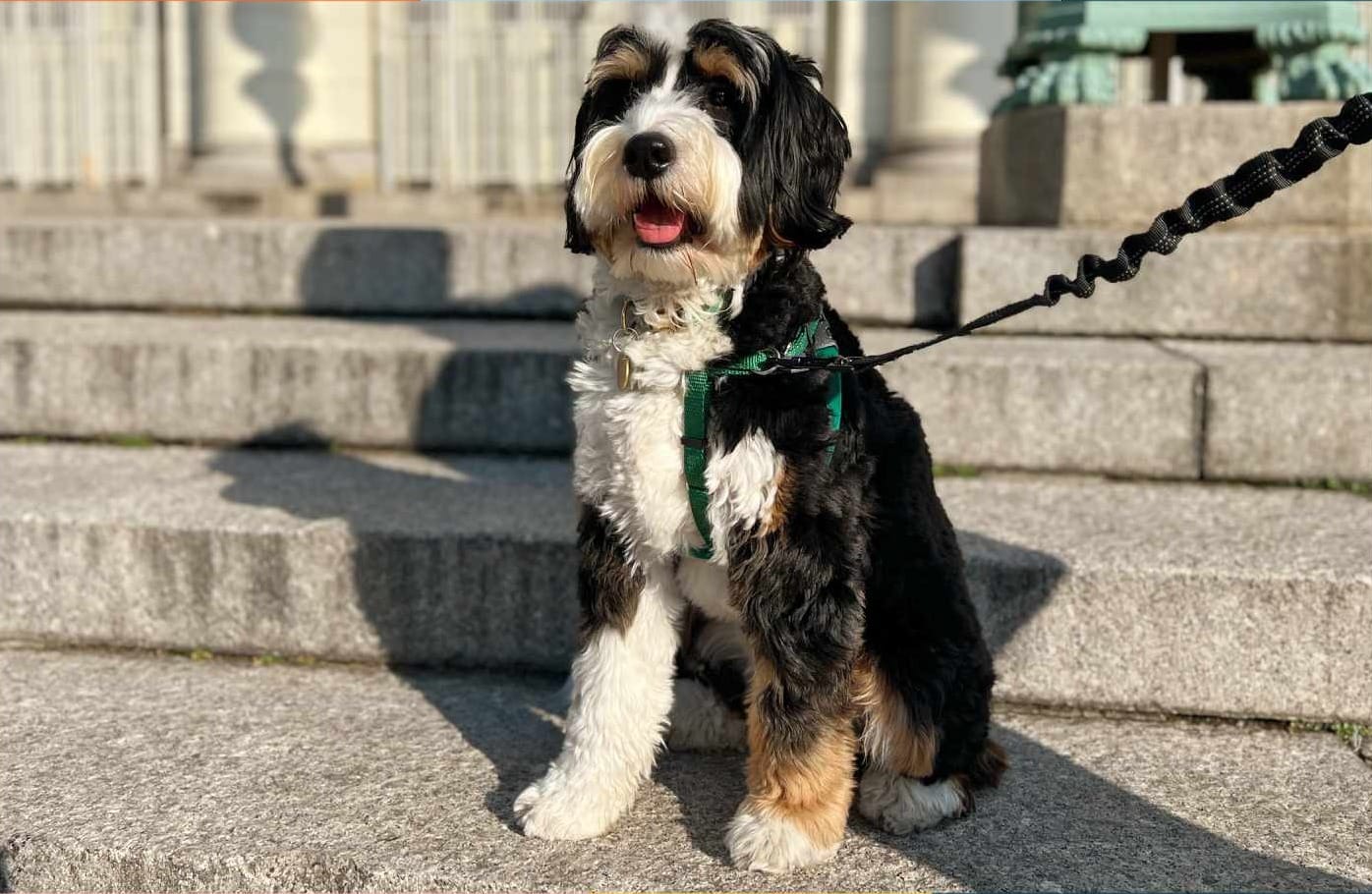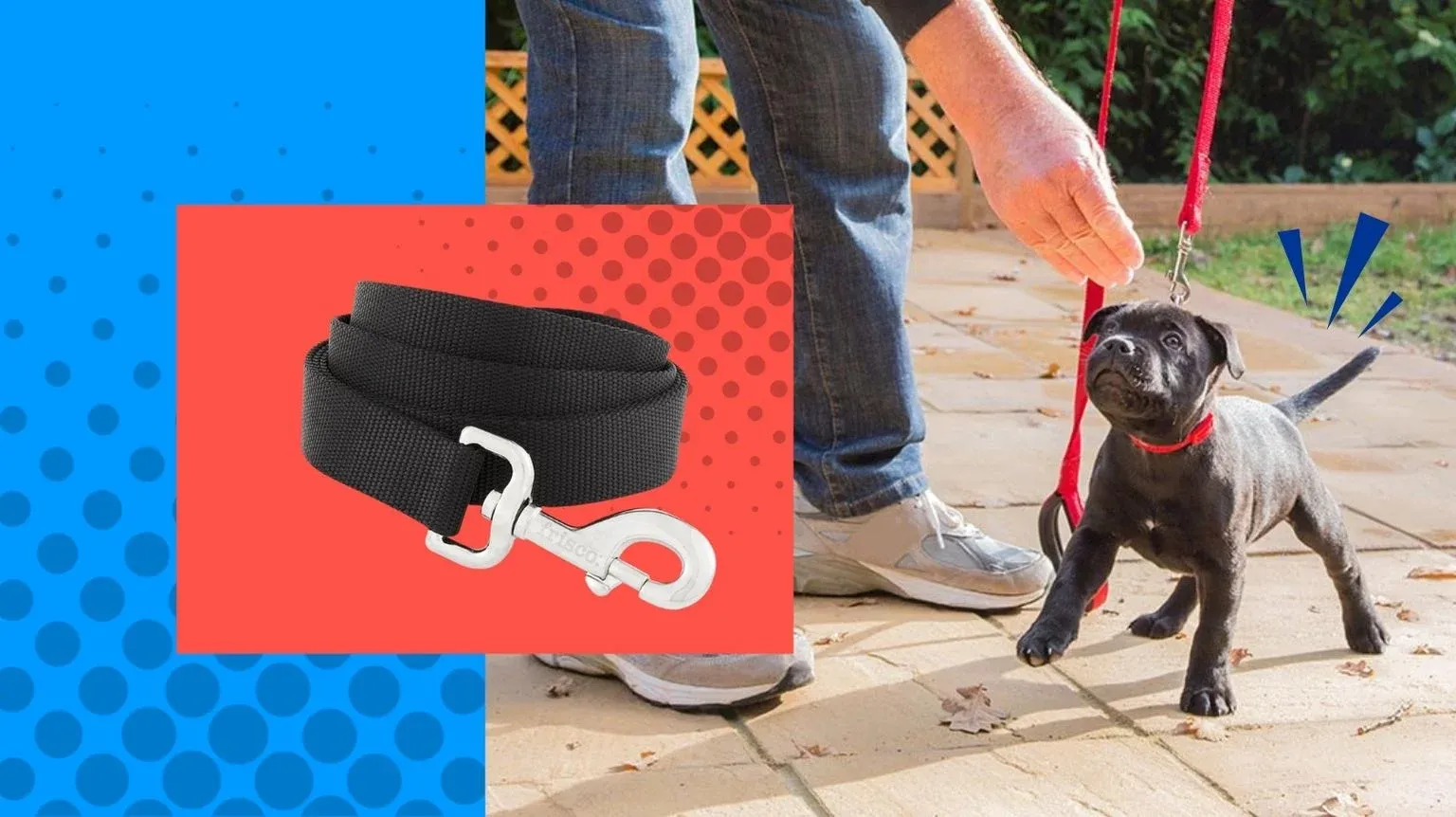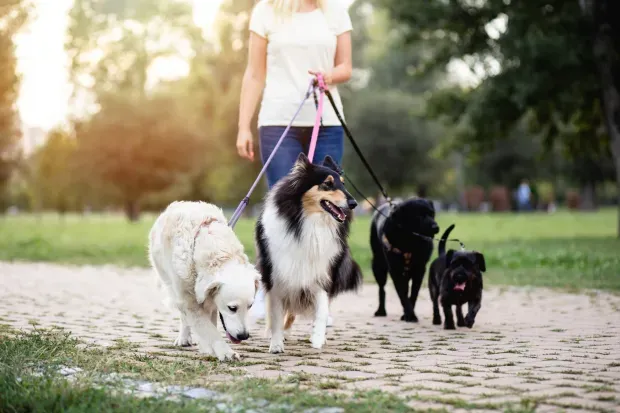Choosing the best leash for a puppy is a pivotal decision that can significantly impact training and safety. A leash is more than a simple tool; it's a vital connection between a pet owner and their puppy during the formative stages of development. The ideal dog leash should provide comfort for the puppy while allowing for effective control and guidance.

Many factors come into play when selecting a leash, including the size of the puppy, the environment in which it will be used, and the specific needs of both the pet and the owner. Safety is of utmost importance, as puppies are still learning and can be unpredictable. A leash that ensures the puppy's safety and comfort while accommodating their growing independence is essential.
With an array of styles, materials, and designs available, finding the right leash involves understanding the features that contribute to a safe and comfortable walking experience. Durability, length, and ease of use are all important qualities for a puppy's first leash. It's important to consider a leash that can help establish positive walking habits and support a puppy through their early stages of training and socialization.

Types of Leashes
When searching for the best dog leash, it's important to consider the style, materials, and features that suit the needs of a puppy. Each type of leash offers different levels of control, length, and suitability for various training scenarios.
Standard Leashes
Standard leashes are often the go-to choice for daily walks and basic training. They are commonly constructed from durable materials such as nylon, leather, or rope. These leashes are typically about 4 to 6 feet in length, providing a balance between control and freedom for the pet.
- Materials: Nylon, Leather, Rope
- Length: 4-6 feet
- Best for: Daily walks, Basic training
Retractable Leashes
Retractable leashes grant adjustable lengths, allowing a puppy to explore while still being under supervision. The leash can extend and retract from a casing, controlled by a mechanism the handler operates. Despite their convenience, they may offer less control compared to standard leashes.
- Features: Extendable leash, Locking mechanism
- Materials: Nylon webbing
- Consideration: Control may be reduced
Adjustable Leashes
Adjustable leashes are versatile, with multiple loops or clips that enable changing the leash length. Ideal for training, these leashes can adapt to various situations. Some can be made hands-free by attaching to the owner's body for increased convenience.
- Features: Multiple clips/loops, Variable length
- Best for: Training, Adjusting to scenarios
Specialty Leashes
These leashes cater to specific needs, such as those for multi-dog homes or enhanced night visibility. Double leashes allow for walking two dogs simultaneously, whereas reflective leashes increase safety during night walks. Waterproof leashes and bungee leashes, which can absorb shock, are also available for active pets.
- Bungee Leash: Shock absorption
- Reflective Leash: Enhanced visibility
- Double Dog Leash: Walk two dogs
- Waterproof: Suitable for swimming or rain
Each subtype of leash incorporates different materials and features designed to suit varying needs and training stages of puppies.
Choosing the Right Size and Material
When selecting a leash for a puppy, one must prioritize the leash's material and size to ensure it's durable, comfortable, and appropriate for the puppy's strength and growth rate.
Material Considerations
The material of a leash affects both its durability and comfort. Nylon webbing is a popular choice because it is strong and less prone to fraying. Leashes made from nylon are also lightweight and often come with reflective stitching for visibility during low-light conditions. Leather is another robust material, providing a classic look and often softening over time without losing its strength. A padded handle is a feature to consider for added comfort during walks.
- Common Materials:
- Nylon: Lightweight, durable, potential for reflective enhancements
- Leather: Natural feel, high durability, ages well
Size and Strength
Size and strength are paramount, particularly when considering the growth potential of a puppy. For small puppies, a thinner and lighter leash is suitable, preventing undue strain on their neck and body. For large dogs, a wider and thicker leash is necessary to accommodate their increased strength and mass.
- Sizing Guide:
- Small puppies: Width 0.5-0.75 inches, lightweight material
- Large dogs: Width 1 inch or more, heavyweight material for increased strength
Choosing a leash that grows with the puppy can be cost-effective while ensuring the pet's safety and comfort during its development stages.
Safety and Comfort Features
Selecting the right leash for a puppy not only involves considering the pup's size and breed but also zeroing in on safety and comfort features. These features ensure that the leash experience is secure and pleasant for both the puppy and the handler.
Harness and Collar Compatibility
When looking for safety in a leash, it's crucial to ensure that it offers reliable D-rings and clasps which are compatible with both a dog collar and dog harness. A back-clip harness is typically preferred for puppies prone to pulling as it provides better control without strain on the neck. A front-clip harness, on the other hand, discourages pulling by redirecting the puppy's movement towards you.
Comfortable Handling
Leashes with padded handles prevent the handler's hand fatigue and offer a more comfortable grip, especially important for those with puppies that tend to pull. Some leashes come equipped with a padded handle designed to reduce tension on the hand from a pulling puppy. The level of padding can vary, with some offering a soft neoprene lining and others featuring more robust cushioning.
Reflective Options for Night Walks
For safety features during night walks or inclement weather, leashes should have reflective materials. Reflective stitching or reflective leashes increase visibility, alerting motorists and pedestrians to the presence of the puppy and handler. This is an essential feature for those who walk their puppies early in the morning or late at night.
Training Leashes for Puppies
When selecting a training leash for a puppy, two important considerations are control and the development of recall. These leashes come in different lengths, each serving a distinct purpose in the training regimen.
Shorter Leashes for Control
Using a shorter leash provides handlers with better control over a puppy's movements and helps maintain close communication. This is especially beneficial during vet visits or in crowded areas where a puppy might become overwhelmed. Shorter leashes, typically around four to six feet in length, ensure that puppies remain by the handler's side, allowing for immediate guidance and correction.

- Benefits of Shorter Leashes:
- Enhanced control for safety and guidance
- Closer communication between puppy and handler
- Practical for teaching basic commands like ""sit"" and ""stay""
Long Leashes for Recall Training
Long training leashes, often ranging from fifteen to fifty feet, give puppies more freedom while still keeping them under the handler's influence. They are particularly useful for recall training in open areas. The extended length allows the puppy to explore and respond to the recall command without the chance of running off. These leashes also help to build trust between the handler and the puppy.
- Advantages of Long Leashes:
- Ideal for practicing recall in a controlled manner
- Provides a sense of freedom for the puppy while training
- Aids in building trust and understanding in the recall process
By choosing the appropriate leash length and type, handlers can effectively train their puppies, ensuring they grow into well-behaved, responsive dogs.
Accessories and Add-ons
When selecting accessories and add-ons for a puppy leash, one should consider their utility and how they complement the pet's lifestyle. Owners can enhance their walking experience with practical leash attachments and coordinate accessories to match their pup's style.
Leash Attachments
Adding attachments to a puppy's leash can significantly increase convenience on walks. Poop bag holders are essential, enabling owners to effortlessly carry waste bags. For instance, a poop bag dispenser that clips onto the leash keeps bags on hand. Similarly, consider a built-in flashlight for night walks, or a water bottle holder for hydration. Selecting the best hands-free options, like a leash with an integrated treat pouch, can also augment the walking experience.
- Essential Attachments:
- Poop bag dispensers
- Flashlights
- Water bottle holders
- Hands-Free Enhancements:
- Integrated treat pouches
- Leash waist clips for jogging
Coordinating with Outfits and Gear
Puppies wearing coordinating gear can make a style statement. Matching the leash with a pup's outfit or harness showcases an owner's attention to style. For breeds like pugs, who often wear harnesses due to their sensitive necks, a coordinating matching leash and harness combo from brands like Rover can be both stylish and breed-appropriate. When selecting accessories, one should look for durable, easy-to-clean materials that reflect the puppy's growing, active lifestyle while maintaining a cohesive look.
- Coordinating Examples:
- Harness and leash sets
- Bandana and leash patterns
- Color-themed collars and leashes
Owners should choose leash accessories and add-ons that serve the dual purpose of functionality and style, tailoring choices to their puppy's specific needs and activities.
Maintenance and Durability
Selecting a leash for a puppy involves considering both how to maintain the leash and ensure its longevity. High-quality construction can increase a leash's lifespan, whereas proper maintenance can bolster its day-to-day durability.
Cleaning and Storage
To maintain a leash's condition, regular cleaning is essential, especially for materials like nylon and leather. Nylon leashes can often be hand-washed with mild soap and water, then air-dried. For leather leashes, specialized cleaners and conditioners are recommended to preserve the material's integrity and flexibility.
- Nylon:
- Hand-wash with mild soap
- Air dry away from direct sunlight
- Leather:
- Use leather cleaner and conditioner
- Store in a cool, dry place away from heat
Proper storage also contributes to a leash's longevity. It is advisable to hang leashes in a cool, dry place to prevent the growth of mold and mildew, and away from pets to avoid chewing damage.
Durability and Warranty
The durabilty of a puppy leash hinges on the quality of its material and construction. High-quality nylon leashes are known for their ability to withstand wear and provide good value due to their strength and longevity. Leather leashes, while more traditional, offer a distinctive appeal and robustness if properly cared for.
| Material | Durability Features | Warranty Options |
|---|---|---|
| Nylon | Resistant to tearing and fraying | Often come with a lifetime warranty |
| Leather | Can last for years if maintained | Lifetime warranty less common, check with manufacturer |
Manufacturers confident in their product's durability may offer lifetime warranties. Such warranties often cover defects in materials and workmanship, reaffirming the value of the purchase. It is vital for purchasers to review the warranty terms to understand the protections provided for their investment in a quality leash.

Where to Buy
When seeking the best leash for a puppy, prospective buyers will find a vast array of options available both online and in-store. Picking the right spot to shop can be as crucial as selecting the leash itself, factoring in variety, price, and expert advice.
Online Retailers
Amazon stands out as a prominent online retailer providing a broad selection of puppy leashes. Customers benefit from:
- A wide range of brands catering to all budgets, from cost-effective basics to high-end designs.
- User reviews that assist in determining the value of a product before purchase.
- Tech-enhanced shopping experiences with comparison tools and detailed product information.
Certified Professional Dog Trainer Recommended: Often, leashes recommended by certified professionals are highlighted, ensuring shoppers can opt for expert-vetted choices.
Physical Pet Stores
Local pet stores offer:
- The advantage of physically handling the leash, gauging its weight, texture, and sturdiness firsthand.
- Immediate purchase without the wait of shipping, important for those who need a leash promptly.
Budget-Friendly Options: While the range might be more curated, many pet stores offer a selection of affordable leashes. In-person advice from staff also adds value, as associates can provide insights based on years of experience with pets.
Frequently Asked Questions
When selecting the best leash for your puppy, it's important to consider factors such as control, training efficiency, durability, and age-appropriateness. Below are some common questions answered to aid in your decision.

- What are the advantages of using a double handle dog leash for puppies?
- A double handle dog leash provides an extra level of control which is beneficial when training puppies. One handle is at the end of the leash for normal walking, and the other is closer to the collar for more direct guidance in crowded or high-distraction areas.
- How does a rope dog leash compare to other types when training a puppy?
- Rope dog leashes are often strong and durable, making them suitable for puppies who may chew or tug. Their sturdy construction can also provide better handling during the training process compared to more flexible types of leashes.
- What should I consider when choosing a retractable leash for my puppy?
- When considering a retractable leash for a puppy, one should assess the locking mechanism for reliability and ease of use. It's also important to evaluate the length of the leash, ensuring it provides enough freedom for the puppy while still maintaining control.
- Which materials are most durable for puppy leashes?
- Nylon and leather are commonly seen as the most durable materials for puppy leashes. Nylon is weather-resistant and easy to clean, while leather, although sometimes requiring more maintenance, is known for its strength and longevity.
- At what age is it appropriate to start leash training with a puppy?
- Leash training can typically begin as soon as a puppy is comfortable wearing a collar, usually around 8 to 10 weeks old. This early introduction can facilitate a positive association with the leash and encourage good walking habits.
- Should I opt for a collar or harness when beginning leash training for a puppy?
- A harness is often recommended for puppies as it distributes pressure more evenly across the body, reducing the risk of injury to the neck. Additionally, a harness can give the owner more control over a playful or energetic puppy.




